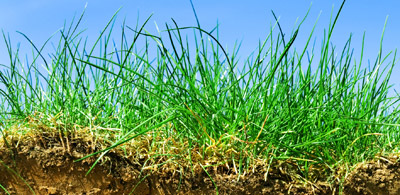Along Lakeshore Path

Back to Along Lakeshore Path
Back to Along Lakeshore Path
From your lawn to the lake
If you are a homeowner, landscaper, or gardener, you are probably familiar with the routine of applying fertilizers and pesticides. What you may not know, though, is that much of the soil in the Midwest already has all the nutrients plants need to grow and defend themselves against pests. In fact, fertilizers with phosphorus are restricted in Illinois because the soil already has enough. Adding too much lawn product can actually weaken plants, promote diseases, and invite more pests. The chemicals can also be washed into nearby lakes and rivers in stormwater.
Pesticides – like the ones used in common "weed and feed" products that combine fertilizers and herbicides—can be especially harmful to aquatic environments. Fish and other aquatic wildlife exposed to these chemicals are more vulnerable to disease and lay fewer eggs. In higher doses, pesticides are lethal. Across the country, millions of fish, frogs, turtles, mussels, and water birds die from pesticide poisoning each year.
Landscapers and gardeners can help keep pollution in check and keep their lawns and gardens healthy by adopting natural lawn care practices like leaving grass clippings on the lawn, mowing to 3 inches or higher, and watering less often but more deeply. These practices build soil that can store nutrients more effectively, promoting a healthier lawn.
Pesticides – like the ones used in common "weed and feed" products that combine fertilizers and herbicides—can be especially harmful to aquatic environments. Fish and other aquatic wildlife exposed to these chemicals are more vulnerable to disease and lay fewer eggs. In higher doses, pesticides are lethal. Across the country, millions of fish, frogs, turtles, mussels, and water birds die from pesticide poisoning each year.
Landscapers and gardeners can help keep pollution in check and keep their lawns and gardens healthy by adopting natural lawn care practices like leaving grass clippings on the lawn, mowing to 3 inches or higher, and watering less often but more deeply. These practices build soil that can store nutrients more effectively, promoting a healthier lawn.
